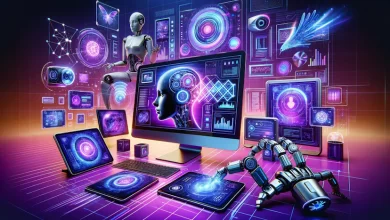Guide Your Career in Embedded Systems Course

A microprocessor, microcontroller, or digital signal processor (DSP) are typically the foundational components of an embedded system. These devices work in collaboration with software designed to perform particular functions inside an external mechanical or electrical system. Around this central structure, a sensor’s many functional components are in position.
The complexity of the system varies from a single microprocessor to a collection of processors, some of which could be installe on pre-made embedded boards or system on chips (SOC) implemented with ASICs or FPGA designs, from a single user interface to a graphical user interface (GUI), and interfaces for establishing connections to the outside world using USB, Bluetooth, Wi-Fi, Zig Bee, RS 232/485, Ethernet, etc. High-level code is used to create software, depending on its functionality.
Significant Embedded Systems Training
AI technology is poised to make a significant entry in order for embedded systems to become a little bit smarter. And also this situation involves the embedding or encapsulation of artificial intelligence, allowing an algorithm or model to operate flawlessly on an embedded system. I’ll take the simple example of a light in a room that automatically turns on or off depending on how much ambient light is there.
Such systems, where the embedded systems are outfitte with AI that replaces human intervention, are already in development and use in a number of systems. And the use of image recognition, autonomous vehicles, drones, robots for dangerous and precise occupations, retail, and machine vision for the Industries 4.0 ecosystem are common examples. Such embedded systems include a variety of mobile computing devices with built-in software, including mobile/smartphones, smart cameras, smart mobile sensors, tablets, and handheld devices with IOT connectivity.
Enterprise systems frequently combine open-source software and certain standard hardware to swiftly construct strong Embedded Systems Training that are intelligent and reach the market with a competitive edge in terms of price and performance. For instance, embedded systems that execute machine vision algorithms are referrer to as embedded vision platforms. Convolutional neural networks (CNN) and deep learning (DL) are AI-based technologies that are increasingly vital for realizing machine vision, especially in highly automate environments.
Characteristics of an Embedded System
- Single-functioned − An embedded system usually performs a specialized operation and
- does the same repeatedly. For example: A pager always functions as a pager.
- Tightly constrained − All computing systems have constraints on design metrics, but
- those on an embedded system can be especially tight. Design metrics is a measure of an
- implementation’s features such as its cost, size, power, and performance. It must be of a
- size to fit on a single chip, must perform fast enough to process data in real time and
- consume minimum power to extend battery life.
- Reactive and Real time − Many embedded systems must continually react to changes in
- the system’s environment and must compute certain results in real time without any
- delay. Consider an example of a car cruise controller; it continually monitors and reacts
- to speed and brake sensors.
These Characteristics Also
- It must compute acceleration or accelerations repeatedly, within a limited time; a delayed computation can result in failure to control of the car.
- Microprocessors based − It must be microprocessor or microcontroller based.
- Memory − It must also have a memory, as its software usually embeds in ROM. It does not
- need any secondary memories in the computer.
- Connected − It must also have connected peripherals to connect input and output devices.
- HW-SW systems − Software is use for more features and flexibility. And hardware is use
- for performance and security.
As per the going the future of embedded systems and lies in smart use of AI algorithms, ubiquitous computing, edge computing, intelligent mobile (computing) devices, IOT with net connectivity, cyber physical systems (CPS), context-sensitive devices, organic computing and the like.
Ubiquitous computing relates to computing that deals with interconnect but also communicating devices which are integrate into the objects we interact with. Organic computing implies creating an environment where humans are surround by a variety of autonomous systems, which in turn are equippe with also sensors and actuators as part of Cyber Physical Systems (CPS) and communicate among themselves freely and organize in order to perform a given task and offer services as require. CPS as a new family of intelligent engineering systems, built from a close integration of cyber and physical systems, has also emerged as a result of fast developments in smart sensors and actuators as part of physical systems, and computing and networking as part of cyber systems.
Conclusion
Consumer electronics, industrial control, smart agriculture, vehicles, healthcare and also medical systems, telecom, aerospace and defense, smart grid energy systems, retail, supply chain, and smart sensors and gadgets are just a few of the industries that use embedded systems today. Their development has been spark by the amazing rise in processing power, the fall in price of microprocessors and memory, and the development of low-cost SOCs.
Ingenious use of artificially intelligent algorithms, ubiquitous computing, edge computing, and organic computing for a variety of application contexts are what will define embedded systems in the future. The market is expect to expand significantly. It is accurately referr to as a future industry. Also, Read Embedded System Training in Delhi






